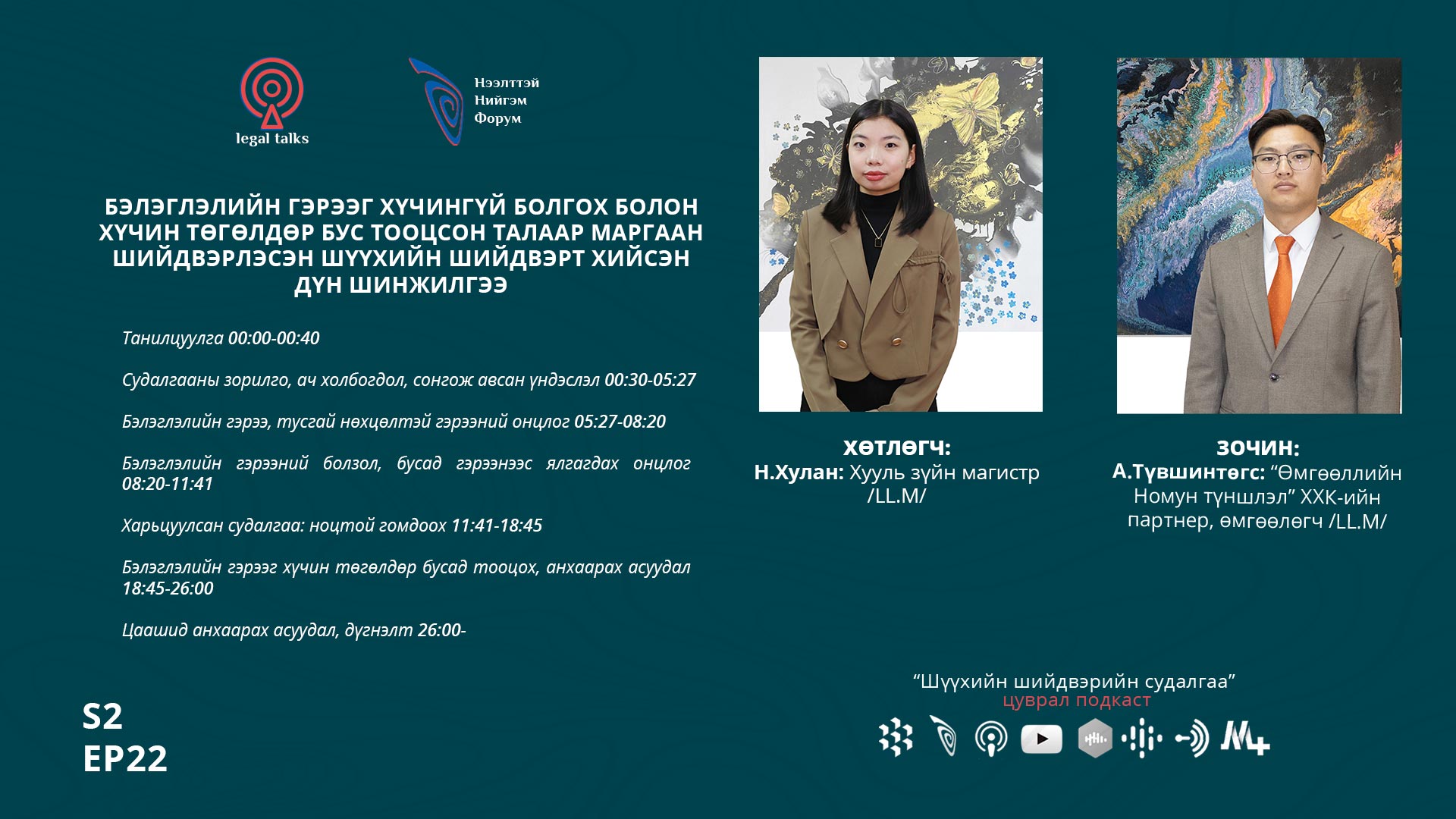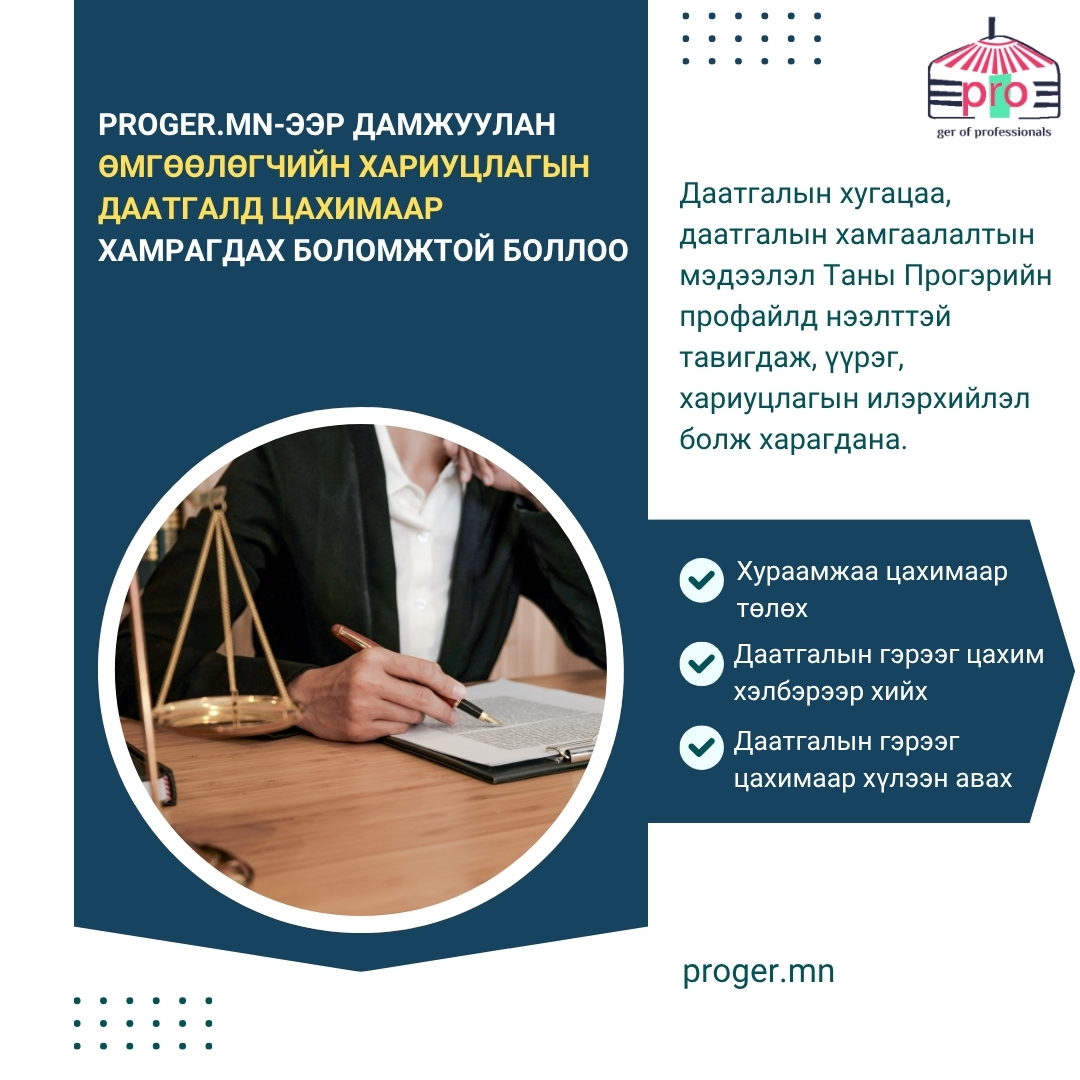Бүртгэлтэй бол нэвтрэх | Бүртгэлгүй бол бүртгүүлэх
i Харвардын их сургуулийн Хууль зүйн сургуулиас эрхлэн гаргадаг “Harvard Law Review” сэтгүүлийн 135 дугаар цуврал болох 2022 оны Хоёрдугаар сарын №4 дугаарт нийтлэгдсэн өгүүллийг орчуулан хүргэж байна. Хүсвэл та бүхэн англи хэлээрх эхийг https://harvardlawreview.org/issues/volume-135-issue-4/ хаягаас унших боломжтой.
ii АНУ-ын Хоёрдугаар тойргийн Давж заалдах шатны шүүхийн ахлах шүүгч, Йелийн Хууль зүйн сургуулийн Стерлингийн болон эмерит профессор, мэргэжлийн хичээлийн лекцийн багш
iii АНУ-ын Хууль зүйн яамны Рилл хөтөлбөрийн оролцогч. Энд бичсэн үзэл санаа нь АНУ-ын Хууль зүйн яамны байр суурийг төлөөлөхгүй болно.
JOHN C.P. GOLDBERG & BENJAMIN C. ZIPURSKY, RECOGNIZING WRONGS (2020). Catherine M. Sharkey, Modern Tort Law: Preventing Harms, Not Recognizing Wrongs, 134 HARV. L. REV. 1423 (2021) (reviewing GOLDBERG & ZIPURSKY, supra note 1). John C.P. Goldberg & Benjamin C. Zipursky, Thoroughly Modern Tort Theory, 134 HARV. L. REV. F. 184 (2021) (responding to Sharkey, supra note 2). GOLDBERG & ZIPURSKY, supra note 1, at 263–64 See generally Guido Calabresi, Civil Recourse Theory’s Reductionism, 88 IND. L.J. 449 (2013) See Sharkey, supra note 2, at 1426–27. GUIDO CALABRESI, THE COSTS OF ACCIDENTS 155 (1970) (“Ослоос үүдэн гарах зардлаас хамгийн бага өртгөөр зайлсхийх арга зам эрэлхийлэх нь илүү аюул багатай, хамгийн боломжит замаар орлуулж болохуйц үйл ажиллагааг эрэлхийлэх явдал юм. Энэ нь ослоос үүдсэн анхдагч зардлын хэмжээг хамгийн өртөг багатайгаар бууруулахуйц гарц хайна гэсэн үг). Sharkey, supra note 2, at 1426, 1435–44. See GOLDBERG & ZIPURSKY, supra note 1, at 15, 82–110. See generally id. at 25–259. Sharkey, supra note 2, at 1445. GOLDBERG & ZIPURSKY, supra note 1, at 210–21 (citing WILLIAM L. PROSSER, HANDBOOK OF THE LAW OF TORTS (1941)). Id. at 232–59 139 S. Ct. 986 (2019). Sharkey, supra note 2, at 1425. But see Goldberg & Zipursky, supra note 3, at 196 (arguing that Justice Gorsuch does not embrace cheapest cost avoider analysis but instead uses it to “parry” Justice Kavanaugh’s “thrust” (quoting Karl N. Llewellyn, Remarks on the Theory of Appellate Decision and the Rules or Canons About How Statutes Are to Be Construed, 3 VAND. L. REV. 395, 401 (1950))). DeVries, 139 S. Ct. at 994 (citing CALABRESI, supra note 7, at 311–18). Id. at 997 (Gorsuch, J., dissenting). GZ are correct that Justice Gorsuch’s cheapest cost avoider argument is just one of several he gives in support of the traditional common law rule. See Goldberg & Zipursky, supra note 3, at 196 (citing DeVries, 139 S. Ct. at 997–99 (Gorsuch, J., dissenting)). At the same time, Justice Gorsuch’s appreciation of the relevant economics went even further than the majority’s: By placing the duty to warn on a product’s manufacturer, we force it to internalize the full cost of any injuries caused by inadequate warnings — and in that way ensure it is fully incentivized to provide adequate warnings. By contrast, we dilute the incentive of a manufacturer to warn about the dangers of its products when we require other people to share the duty to warn and its corresponding costs. DeVries, 139 S. Ct. at 997 (Gorsuch, J., dissenting) (citing STEVEN SHAVELL, ECONOMIC ANALYSIS OF ACCIDENT LAW 17 (1987); CALABRESI, supra note 7, at 135 & n.1; Italia Societa per Azioni di Navigazione v. Or. Stevedoring Co., 376 U.S. 315, 324 (1964)). See DeVries, 139 S. Ct. at 996–97 (Gorsuch, J., dissenting). Sharkey, supra note 2, at 1424, 1426. See Goldberg & Zipursky, supra note 3, at 195–96. See id. at 196–98. See id. at 195 n.67, 196. This is compounded by Justice Kavanaugh’s “hedge,” id. at 196 n.68, that the bare-metal “product manufacturer will often be in a better position than the parts manufacturer to warn of the danger from the integrated product,” DeVries, 139 S. Ct. at 994 (emphasis added); see also id. at 994 n.2 (“We do not rule out the possibility that, in certain circumstances, the parts manufacturer may also have a duty to warn.”). Goldberg & Zipursky, supra note 3, at 195. Id. at 196. See, e.g., GOLDBERG & ZIPURSKY, supra note 1, at 296–97; Goldberg & Zipursky, supra note 3, at 190 n.45. Contrast this position of GZ with that of Robert Bork, who argued for a consumer welfare standard in antitrust in part because he believed it was the only standard that courts were competent to apply. See ROBERT H. BORK, THE ANTITRUST PARADOX 72–89 (2d ed. 1993). We believe that both positions, either that courts are competent to do only this kind of analysis, or that courts are not able to do it, are wrong, both in theory and as a representation of what courts actually do. E.g., JULES L. COLEMAN, RISKS AND WRONGS (1992); ERNEST J. WEINRIB, THE IDEA OF PRIVATE LAW (1995). The same is also true of most law theories, including every theory of statutory interpretation. See, e.g., Tara Leigh Grove, The Supreme Court, 2019 Term — Comment: Which Textualism?, 134 HARV. L. REV. 265, 266–67 (2020). See CALABRESI, supra note 7, at 28 (describing this “tertiary” goal of tort law). See, e.g., Spano v. Perini Corp., 250 N.E.2d 31 (N.Y. 1969). GOLDBERG & ZIPURSKY, supra note 1, at 11, 80; Goldberg & Zipursky, supra note 3, at 198. GOLDBERG & ZIPURSKY, supra note 1, at 6, 47; see also id. at 5–6, 76–81 (describing their “pragmatic conceptualist” approach). See, e.g., Desiano v. Warner-Lambert & Co., 467 F.3d 85, 94–95 (2d Cir. 2006) The great torts scholar, Professor Fleming James, Jr., believed that the coming of insurance made the private law arrangement of tort law obsolete and focused his tort theories on the public law aim of holding the best “loss spreader” liable. See Fleming James, Jr., Accident Liability Reconsidered: The Impact of Liability Insurance, 57 YALE L.J. 549 (1948). For a full discussion of James’s approach to tort law, see Guido Calabresi, Professor Fleming James Jr (1904–1981), in SCHOLARS OF TORT LAW 259 (James Goudkamp & Donal Nolan eds., 2019). See also, e.g., Steve Hedley, Corrective Justice — An Idea Whose Time Has Gone?, in LAW IN THEORY AND HISTORY: NEW ESSAYS ON A NEGLECTED DIALOGUE 305 (Maksymilian Del Mar & Michael Lobban eds., 2016). But see GOLDBERG & ZIPURSKY, supra note 1, at 274–76 (attempting to rebut this criticism). 111 N.E. 1050 (N.Y. 1916); see id. at 1053 (“Precedents drawn from the days of travel by stagecoach do not fit the conditions of travel to-day. The principle that the danger must be imminent does not change, but the things subject to the principle do change. They are whatever the needs of life in a developing civilization require them to be.”). 377 P.2d 897 (Cal. 1963); see id. at 901 (“The purpose of such liability is to insure that the costs of injuries resulting from defective products are borne by the manufacturers that put such products on the market rather than by the injured persons who are powerless to protect themselves.”) 441 P.2d 912 (Cal. 1968); see id. at 916 (“‘[D]uty’ is not sacrosanct in itself, but only an expression of the sum total of those considerations of policy which lead the law to say that the particular plaintiff is entitled to protection.” (quoting WILLIAM L. PROSSER, HANDBOOK OF THE LAW OF TORTS 333 (3d ed. 1964))). See, e.g., Lauer v. City of New York, 733 N.E.2d 184, 187 (N.Y. 2000) (“While the Legislature can create a duty by statute, in most cases duty is defined by the courts, as a matter of policy. Fixing the orbit of duty may be a difficult task. Despite often sympathetic facts in a particular case before them, courts must be mindful of the precedential, and consequential, future effects of their rulings . . . .”); Waters v. N.Y.C. Hous. Auth., 505 N.E.2d 922, 923–24 (N.Y. 1987) (“The common law of torts is, at its foundation, a means of apportioning risks and allocating the burden of loss. While moral and logical judgments are significant components of the analysis, we are also bound to consider the larger social consequences of our decisions and to tailor our notion of duty so that the ‘legal consequences of wrongs are limited to a controllable degree.’” (quoting Tobin v. Grossman, 249 N.E.2d 419, 424 (N.Y. 1969))). 162 N.E. 99 (N.Y. 1928). For the uninitiated, GZ provide this helpful summary of the facts of Palsgraf: A man leapt onto the open space at the end of a train car as the train was pulling out of the defendant railroad’s station. Two conductors employed by the railroad tried to steady him by pushing and pulling him onto the train. In the process, they dislodged a newspaper-wrapped package he was carrying under his arm. The conductors did not know — and had no reason to know — that the package contained powerful fireworks, which fell onto the tracks, exploding upon impact. The explosion was powerful enough to blow away a chunk of the railway platform and to cause reverberations around the station. As a result, a large metal scale, located on the platform perhaps thirty feet away from the point where the package fell, toppled onto Mrs. Palsgraf, a ticketed customer who was waiting for a different train. She sued the railroad for negligence. GOLDBERG & ZIPURSKY, supra note 1, at 199. GOLDBERG & ZIPURSKY, supra note 1, at 198–204 (quoting Benjamin C. Zipursky, Rights, Wrongs, and Recourse in the Law of Torts, 51 VAND. L. REV. 1 (1998)). Sharkey, supra note 2, at 1436 n.46. But see Goldberg & Zipursky, supra note 3, at 189 n.36 (noting that if you adopt their theory of MacPherson, the two decisions fit together). GOLDBERG & ZIPURSKY, supra note 1, at 200–04. See, e.g., Palsgraf, 162 N.E. at 100 (“The plaintiff sues in her own right for a wrong personal to her, and not as the vicarious beneficiary of a breach of duty to another.”); id. at 101 (“Negligence, like risk, is thus a term of relation.”). See Sharkey, supra note 2, at 1436 n.46. MacPherson v. Buick Motor Co., 111 N.E. 1050, 1053 (N.Y. 1916) (emphasis added). Sharkey, supra note 2, at 1437 (citing MacPherson, 111 N.E. at 1051–52). See Palsgraf, 162 N.E. at 100–01; see also RESTATEMENT (FIRST) OF TORTS § 435 (AM. L. INST. 1934). 47 Palsgraf, 162 N.E. at 101. Id. at 99–100. See, e.g., Lauer v. City of New York, 733 N.E.2d 184, 187 (N.Y. 2000). See, e.g., Lauer v. City of New York, 733 N.E.2d 184, 187 (N.Y. 2000). See id. Holmes is perhaps best known for Baron Bramwell’s instrumentalist words: “For the convenience of mankind in carrying on the affairs of life, people as they go along roads must expect, or put up with, such mischief as reasonable care on the part of others cannot avoid.”at 267. 235 F.3d 101 (2d Cir. 2000). See id. at 107–13; see also id. at 114 (Jacobs, J., concurring). We use this term deliberately. See GOLDBERG & ZIPURSKY, supra note 1, at 232–59 (explaining their “dual constructivist” approach). We agree with GZ that judges “construct” wrongs “using precedents and principles embedded in the law as [their] principal guide.” Id. at 258. Where we differ with GZ is in our recognition that a judge, in an appropriate case, often does reach “a decision to deem certain kinds of injurious conduct tortious” based “primarily on the social benefit that stands to be achieved by imposing liability for such conduct,” id. at 239, and does so both properly and manifestly. See GUIDO CALABRESI, THE FUTURE OF LAW AND ECONOMICS 158 (2016) (“Torts . . . affects our values, and it does so with respect to things as crucial as safety, the environment, the duty to look after each other, and life itself.”). The effect of law on values is by no means limited to the domain of torts. See id. at 157–58 (giving as examples the effects of law on attitudes toward race, same-sex marriage, and abortion, and crediting the critical legal studies movement for this insight). GOLDBERG & ZIPURSKY, supra note 1, at 237–38; see also id. at 263 (“Our ‘gallery’ metaphor aims to capture the thought that, even though the various torts do not express a single substantive moral principle, they are not merely an ad hoc collection either.”). For GZ’s and Sharkey’s most recent takes on punitive damages, see id. at 168–74 (citing John C.P. Goldberg, Tort Law for Federalists (and the Rest of Us): Private Law in Disguise, 28 HARV. J.L. & PUB. POL’Y 3 (2004); Benjamin C. Zipursky, A Theory of Punitive Damages, 84 TEX. L. REV. 105 (2005); Benjamin C. Zipursky, Punitive Damages After Philip Morris USA v. Williams, 44 CT. REV. 134 (2007–2008); Benjamin C. Zipursky, Palsgraf, Punitive Damages, and Preemption, 125 HARV. L. REV. 1757 (2012)); and Sharkey, supra note 2, at 1448–54. See generally Keith N. Hylton, Punitive Damages and the Economic Theory of Penalties, 87 GEO. L.J. 421 (1998); A. Mitchell Polinsky & Steven Shavell, Punitive Damages: An Economic Analysis, 111 HARV. L. REV. 869 (1998); Catherine M. Sharkey, Punitive Damages as Societal Damages, 113 YALE L.J. 347 (2003). See also, e.g., Ciraolo v. City of New York, 216 F.3d 236, 242 (2d Cir. 2000) (Calabresi, J., concurring).See CALABRESI, supra note 55, at 120–21, 125; Guido Calabresi, A Broader View of the Cathedral: The Significance of the Liability Rule, Correcting a Misapprehension, 77 LAW & CONTEMP. PROBS. 1 (2014); Guido Calabresi & A. Douglas Melamed, Property Rules, Liability Rules, and Inalienability: One View of the Cathedral, 85 HARV. L. REV. 1089, 1124–27 (1972).See 2 DAN B. DOBBS, PAUL T. HAYDEN & ELLEN M. BUBLICK, THE LAW OF TORTS § 381, at 534, § 383, at 538–45 (2d ed. 2011)МЭДЭЭ, МЭДЭЭЛЭЛ

“Дагнасан шүүхийн тогтолцоо: Хүүхдийн эрх ашиг ба гэр бүл” олон улсын эрдэм шинжилгээний хурал (II хэсэг)
6 hours from now

S2EP22. А.Түвшинтөгс: Бэлэглэлийн гэрээг хүчингүй болгох болон хүчин төгөлдөр бус тооцсон талаар маргаан шийдвэрлэсэн шүүхийн шийдвэрт хийсэн дүн шинжилгээ
1 day ago

“Дагнасан шүүхийн тогтолцоо: Хүүхдийн эрх ашиг ба гэр бүл” олон улсын эрдэм шинжилгээний хурал (I хэсэг)
1 day ago

Өмгөөлөгч мэргэжлийн хариуцлагын даатгалдаа цахимаар хамрагдах боломжтой боллоо
1 week ago
-
Ганбат Мөнхтулга
2025-06-26 Эрдэм шинжилгээний өгүүлэлдуудаж байна ! -
Батсайханы Мөнхзул
2025-06-26 Эрдэм шинжилгээний өгүүлэлдуудаж байна ! -
Ганбат Мөнхтулга
2025-06-25 Эрдэм шинжилгээний өгүүлэлдуудаж байна ! -
Баатарын Сарантуяа
2025-06-24 Эрдэм шинжилгээний өгүүлэлдуудаж байна ! -
Ганбат Мөнхтулга
2025-06-24 Эрдэм шинжилгээний өгүүлэлдуудаж байна ! -
Judilogy
2025-06-23 Мэдээллийн хуудасдуудаж байна ! -
Ганбат Мөнхтулга Нэрэндашийн Дуламсүрэн
2025-06-23 Эрдэм шинжилгээний өгүүлэлдуудаж байна ! -
Чинбатын Болормаа
2025-06-23 Эрдэм шинжилгээний өгүүлэлдуудаж байна ! -
Ганбат Мөнхтулга
2025-06-23 Эрдэм шинжилгээний өгүүлэлдуудаж байна ! -
Ганбат Мөнхтулга Мөнхгэрэлийн Дэлгэрмаа
2025-06-22 Эрдэм шинжилгээний өгүүлэлдуудаж байна !